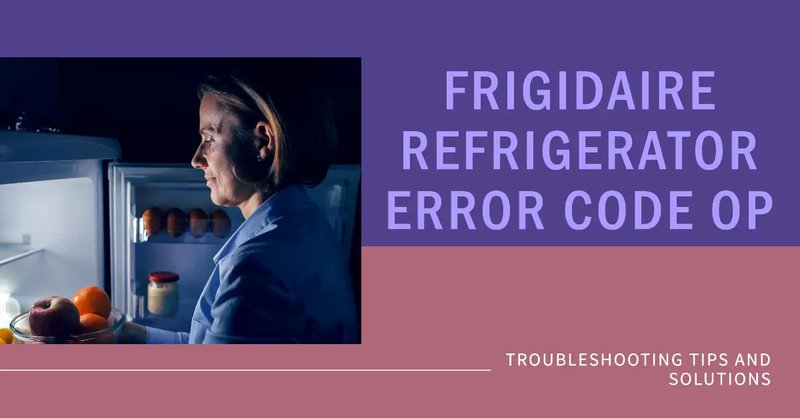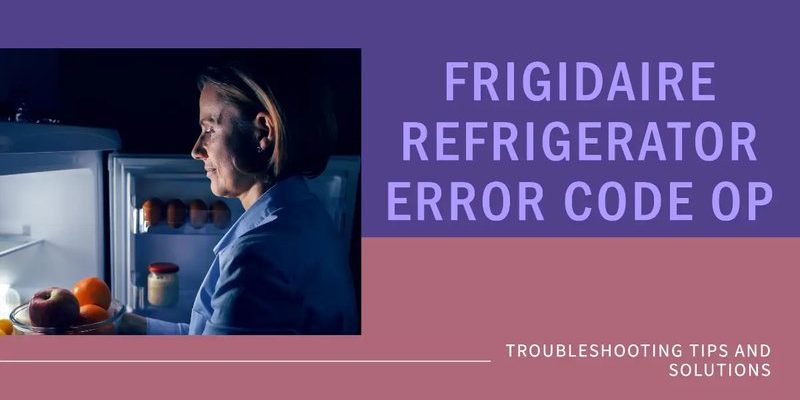
Don’t worry—you don’t need a PhD in appliance repair to understand what this error code means. In simple terms, it’s a way your fridge is telling you that it’s having trouble communicating with its temperature sensors. These sensors are like the thermostat in your home. They monitor the temperature inside the fridge and convey it to the control board so that it can adjust the cooling appropriately. If these sensors can’t relay accurate information, the fridge doesn’t know how cold or warm it is inside, and that can spell trouble if not addressed.
Understanding Error Code E1 in Your Frigidaire Refrigerator
So, what exactly triggers the E1 error? This error code typically means there’s an issue with the temperature sensor circuit—like your fridge’s brain receiving a garbled message. It could be as straightforward as a loose connection, much like when a loose plug causes a flickering lamp. Sometimes, it might be due to a faulty sensor, which is akin to a broken thermometer that never gives the right reading.
Another possibility is a faulty control board. Think of this as the refrigerator’s command center. If it’s not functioning correctly, it’s like trying to navigate using a broken GPS. The control board processes the information from the sensors and makes decisions on how cold the fridge should be. If it’s not getting the right data, it can’t do its job, leading to the E1 error.
Understanding these components helps in realizing that while this error might sound intimidating, it usually points to a few specific areas where something’s off. Recognizing that gives you a starting point for troubleshooting, which is the first step in getting your fridge back to normal operation.
Common Causes of Error Code E1
The first and perhaps the most frequent cause is a loose or dirty connection. Over time, dust and debris can accumulate, leading to poor connectivity between the sensor and the control board. Imagine trying to have a phone call with someone while static fills the line. If the sensors can’t communicate properly with the control board due to such interference, the result is often an E1 error.
Another frequent suspect is a damaged or defective sensor. Just like a faulty thermometer that always reads too high or too low, a defective sensor can send incorrect temperature data back to the control board. If your fridge is too warm or too cold despite setting the right temperature, this could likely be the issue.
Lastly, issues with the control board itself shouldn’t be ignored. Although less common, a malfunctioning control board can cause the E1 error. If it’s like a misbehaving computer that randomly freezes or crashes, the board could be intermittently failing to process information, thus triggering the error code.
Steps for Troubleshooting Error Code E1
Now that we know what might be causing the E1 error, let’s talk about what you can do. Start by ensuring all connections are secure. Open up your fridge and locate the temperature sensor, typically found on the interior back wall. Make sure it’s clean and the wires are tightly connected. Cleaning the connections could be as simple as dusting off your computer keyboard—sometimes it’s just what you need.
If that doesn’t solve the problem, the next step is to check the sensor itself. You may need a multimeter to test for continuity, a bit like checking if the battery is still good in your remote. If the sensor fails this test, replacing it might be necessary. Most sensors are accessible and won’t cost a fortune, making it a reasonable DIY project if you’re comfortable with minor repairs.
Lastly, if neither of these approaches work, the control board might need professional attention. This is usually the most complex and costly fix, akin to calling in a computer technician to fix a stubborn bug in your system. At this point, consulting a professional is recommended to ensure the problem is accurately diagnosed and repaired.
Preventative Tips to Avoid Future E1 Errors
No one wants to deal with appliance issues, especially not repeatedly. To minimize the chances of encountering the E1 error again, a little maintenance goes a long way. Regular cleaning and inspecting the connectors for dust and grime can prevent bad connections. It’s like giving your car regular oil changes to keep it running smoothly.
Additionally, be mindful of how you use your fridge. Avoid overloading it, as this can strain the cooling system and indirectly affect the sensors’ readings. Much like packing a suitcase, leaving a bit of room ensures that everything functions smoothly without putting too much pressure on one area.
Finally, consider scheduling a yearly check-up with a professional to keep everything in working order. It might feel unnecessary when everything’s running fine, but it can prevent small issues from turning into big headaches down the line. Just remember, keeping your fridge in tip-top shape ensures you have a reliable appliance that keeps things cool and fresh—without the drama of flashing error codes.
